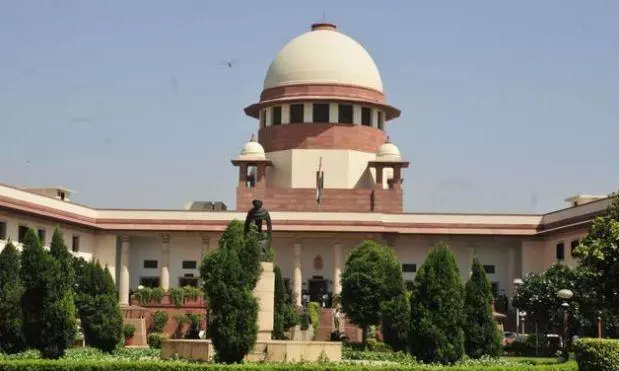Private Properties not Material Resources for States: SC

New Delhi: The Supreme Court in a majority 7:2 verdict held that private property cannot be deemed material resources of the community empowering states to take them over for distribution to serve common good under the Constitution.
The 429-page judgment of the nine-judge Constitution bench headed by Chief Justice D.Y. Chandrachud on Tuesday lent clarity on the interpretation of Articles 31C and 39(b) of the Constitution, crucial provisions regarding the rights of individuals against the state’s authority to control resources for public good.
The vexed legal question dealt by the apex court was whether private property can be considered ‘material resources of the community’ under Article 39(b) and taken over by state authorities for distribution to subserve the ‘common good’.
CJI Chandrachud authored the 193-page majority judgment on behalf of six other judges -- Justices Hrishikesh Roy, J.B. Pardiwala, Manoj Misra, Rajesh Bindal, Satish Chandra Sharma, Augustine George Masih -- to decide the two issues.
Two judges on the bench -- Justice B.V. Nagarathna partially concurred with the majority view, and Justice Sudhanshu Dhulia dissented from the majority opinion.
The majority verdict did not concur with the view expressed by Justice Krishna Iyer in the case of Ranganatha Reddy of 1978 wherein it was held that private property could be regarded as community resources.
CJI Chandrachud said, “This court is unable to subscribe to the expansive view adopted in the minority judgment authored by Justice Krishna Iyer in Ranganatha Reddy and subsequently relied on by this court in Sanjeev Coke. Not every resource owned by an individual can be considered a ‘material resource of the community’ merely because it meets the qualifier of ‘material needs’.”
“The direct question referred to this bench is whether the phrase “material resources of the community” used in Article 39(b) includes privately-owned resources. Theoretically, the answer is yes, the phrase may include privately owned resources,” the CJI said.
The bench observed, “The inquiry about whether the resource in question falls within the ambit of Article 39(b) must be context-specific and subject to a non-exhaustive list of factors such as the nature of the resource and its characteristics; the impact of the resource on the well-being of the community; the scarcity of the resource; and the consequences of such a resource being concentrated in the hands of private players. The Public Trust Doctrine evolved by this Court may also help identify resources which fall within the ambit of the phrase “material resource of the community.”
The bench, in its conclusions, upheld Article 31C, which provided immunity to certain laws from judicial scrutiny, “to the extent that it was upheld in Kesavananda Bharati v Union of India remains in force”.
The Kesavananda Bharati judgment had held that “the first half of Article 31C granting immunity to laws enacted in furtherance of clauses (b) or (c) of Article 39 (on taking over of properties) against challenges based on Articles 14,19 and 31 was valid” and the second half of the article excluding judicial review over whether a law in truth furthers the principles set out in clauses (b) or (c) of Article 39 was struck down.
“The term ‘distribution’ has a wide connotation. The various forms of distribution which can be adopted by the state cannot be exhaustively detailed. However, it may include the vesting of the resources concerned in the state or nationalisation. In the specific case, the court must determine whether the distribution ‘subserves the common good’,” it said
The top court had heard 16 petitions, including the lead petition filed by the Mumbai-based Property Owners’ Association in 1992.

